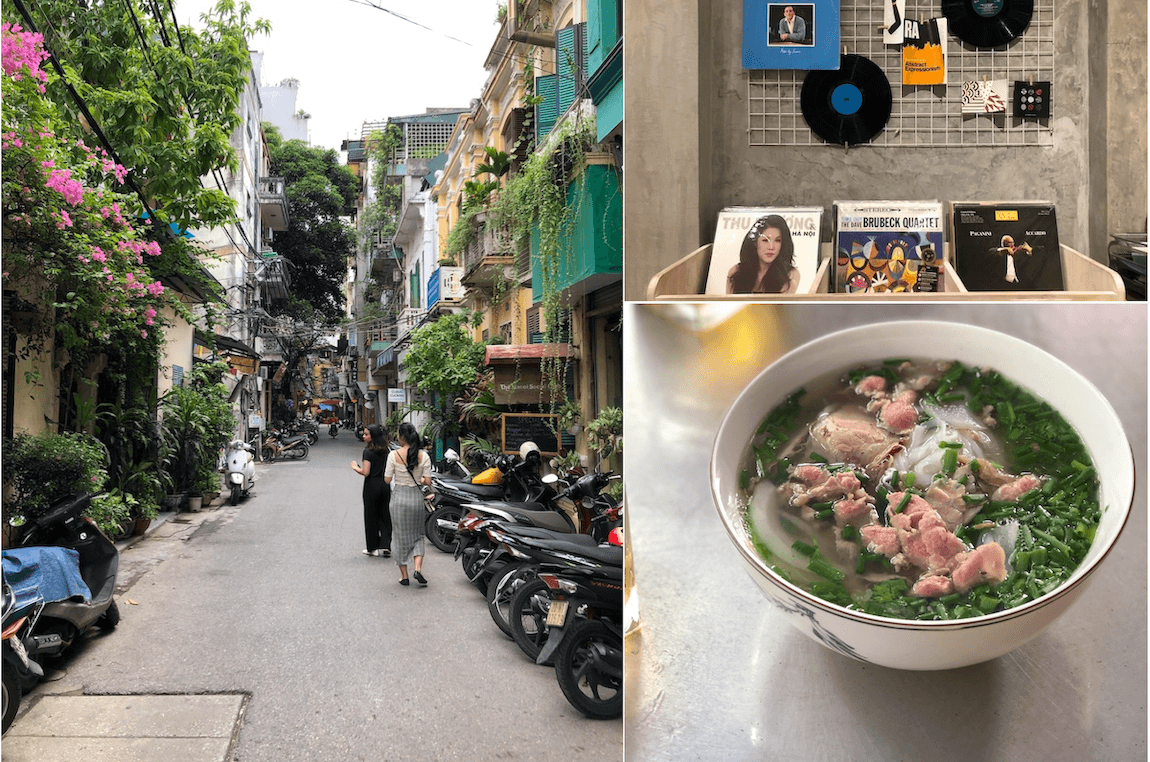If you turn to the internet for tips on visiting Hanoi, then you’ll likely see it over and over again: comparisons made between the northern city to its cousin in the south, Ho Chi Minh City, but the two are so different that they should really be thought of as complementary rather than competing destinations.
You may have heard people describe Hanoi as “charming.” It is. It definitely feels a lot more laid-back than HCMC, and has far less of a city sprawl — but that doesn’t mean it’s sleepy. Hanoi has loads of great historical sights, arts and culture hot spots, distinctive design and style, and of course, an excellent food and coffee scene.
We’ll break that all down here. Gird ‘yer loins, ’cause it’s gonna be a long one.
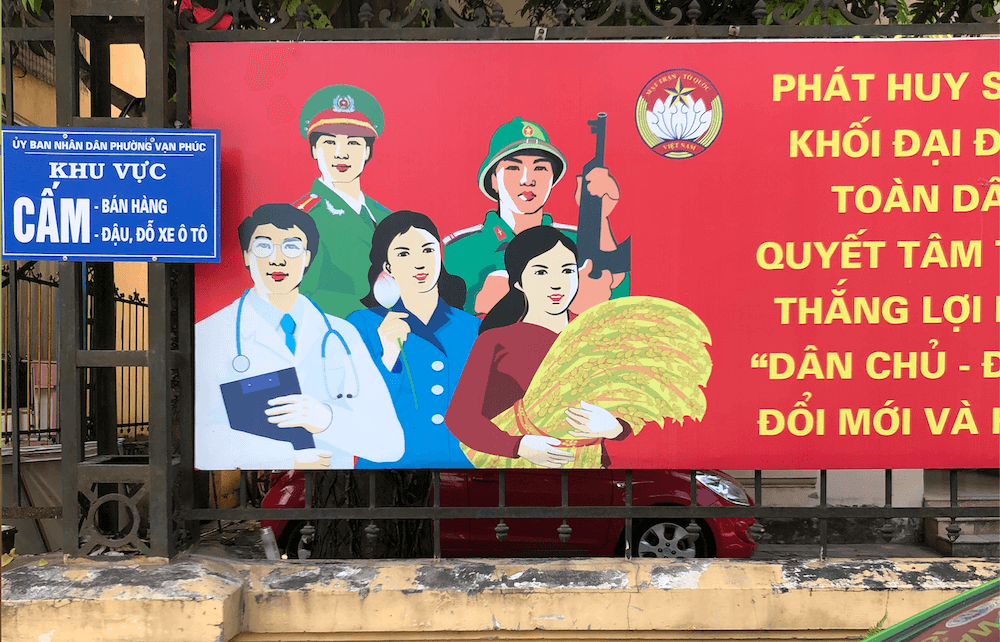
ARTS + CULTURE
Artists, designers, musicians and the like will tell you that Hanoi is the true creative center of the country, where experimentation and originality are prized over marketability.
If you’re the kind of person who would happily spend hours making your way through a huge museum, then you’ll find the most expansive exhibitions at the Vietnam Fine Arts Museum, the National Museum of Ethnology, and the Vietnam National Museum of History. The Vietnam Fine Arts Museum, located across the road from tourist hot spot The Temple of Literature, is the largest of its kind in the country, and holds over 3,000 pieces of artwork and artisanal objects.
The National Museum of Ethnology displays 15,000+ cultural artifacts and thousands of photographs representing the 54 ethnic groups of Vietnam, while the National Museum of History, housed in a stunning colonial-era building, houses over 200,000 historical artifacts and national treasures.
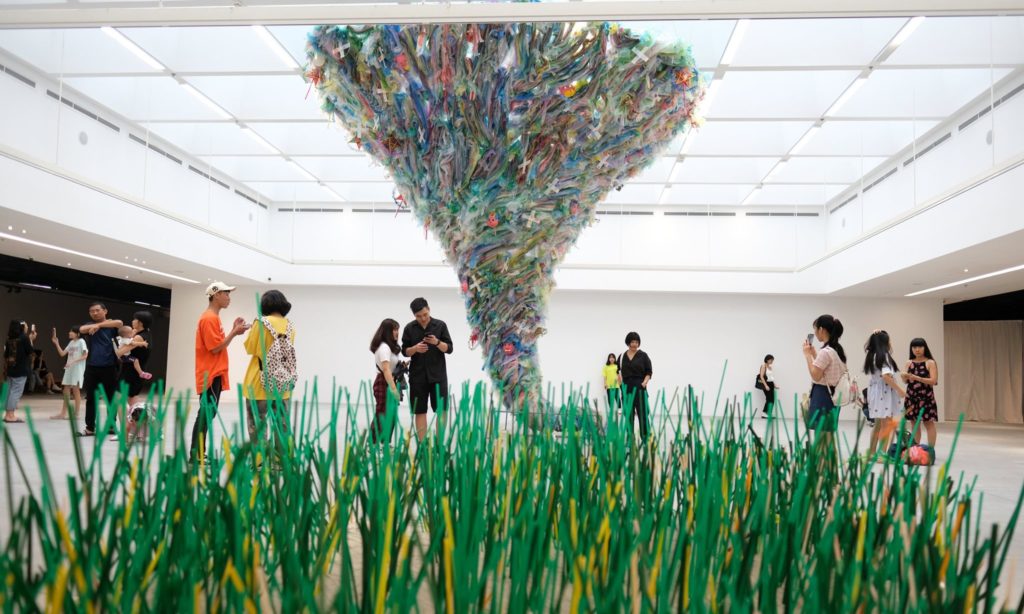
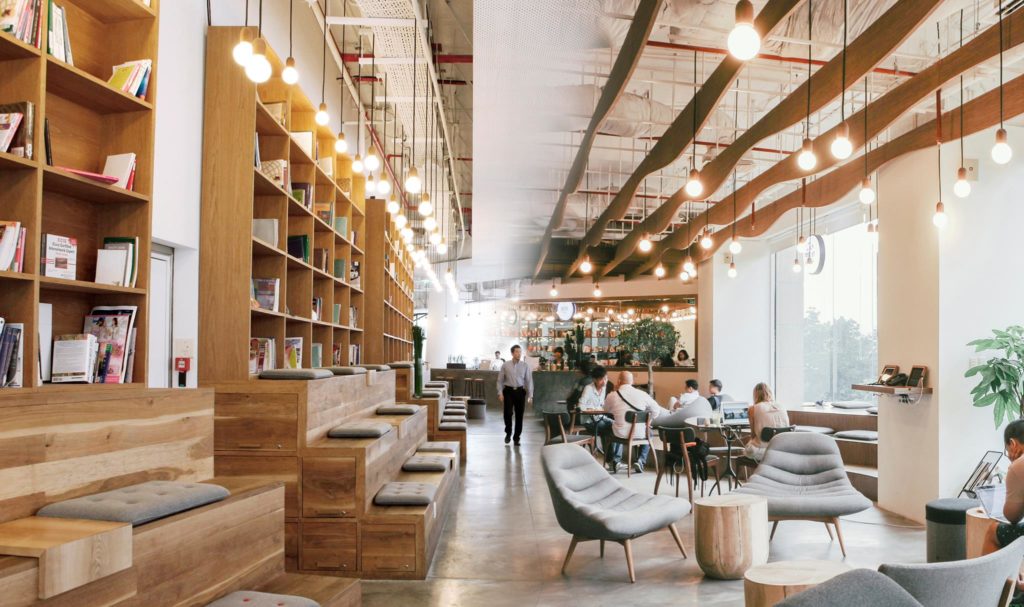
FOOD FOOD FOOD
One of the obvious reasons to visit Hanoi is to get the real deal of whatever it is you love about Vietnamese food — and get blown away by dishes that you’ve never had before.
Northern Vietnamese food has its own flavor profile and specialties distinct from those of the south, and if you’re a food-focused kind of visitor, then you’ll appreciate getting to try new dishes that you probably haven’t come across before.
Locals say that because pho and bun cha originated in Hanoi, the best of both can be found in their city. Whether or not you believe that second part, nobody can deny that there’s some damn fine iterations of both dishes to be found in the country’s capital.
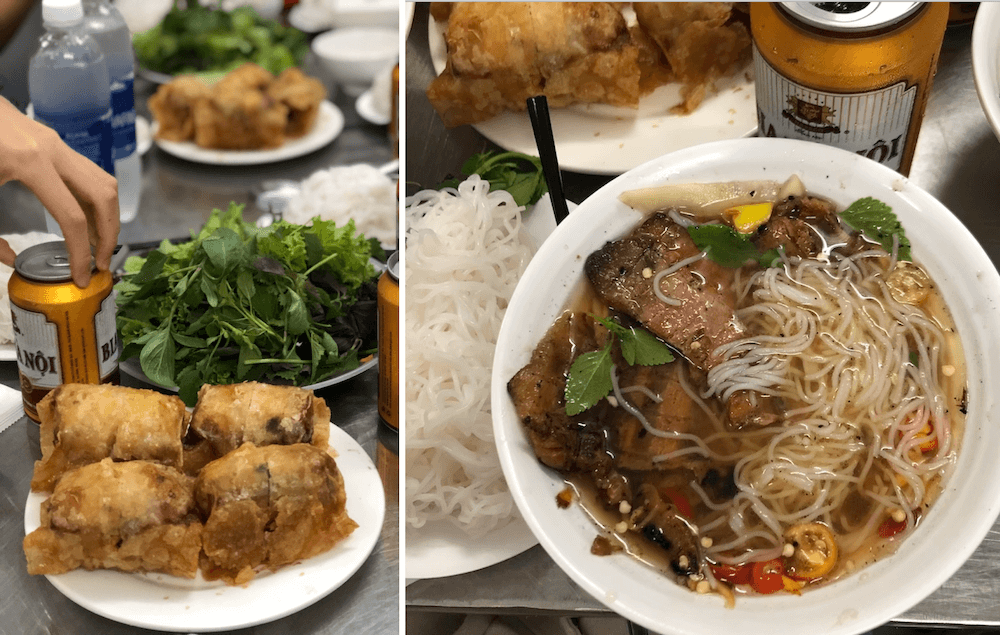
With bun cha, sweet and smoky slices of fatty grilled pork are served in an umami-intense broth, which you then add rice vermicelli, fresh herbs, chopped garlic and ginger into, and eat all together alongside deep-fried spring rolls (a crab-stuffed version is especially popular in Hanoi). The most prominent shop in the city is Bun Cha Huong Lien, whose claim to fame is having hosted two ultra-VIPs when Barack Obama joined Anthony Bourdain for a meal there, for a segment of the latter’s food and travel show No Reservations.
If queuing up after tons of wide-eyed tourists isn’t your thing, then try Bun Cha Dac Kim, which is also excellent (if not better), or Bun Cha Ta Hanoi, which is solid and has slightly trendier digs.
If you haven’t had northern-style pho before, note that this regional version goes by a “less is more” philosophy: Purity and balance of flavor in the broth takes precedence, so most restaurants won’t be supplying you with a platter of herbs to add in (as they would in the south). More likely, the bowl will be garnished with lots of chopped spring onion and some onion slices, and you’ll have lime wedges, sliced chilis and garlic to flavor your bowl as you like. Pho Gia Truyen is a local institution, but be prepared to queue.
Alternatively, try Pho Suong — but if the heat and humidity are very difficult for you to bear, then Pho 10 Ly Quoc Su offers a conventional modern restaurant setting with air conditioning.
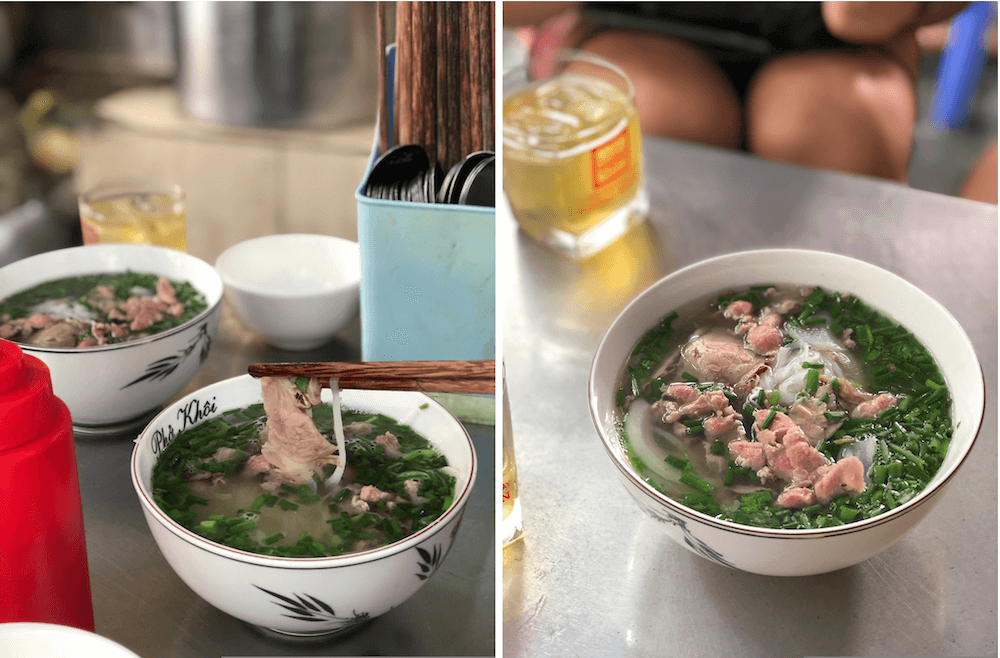
If you like the fermented rice noodle sheets used in cheong fun or Thai khao phan phak, then you’ll appreciate banh cuon, freshly made layers of the thin, silky sheets wrapped around a filling of ground pork, wood ear mushrooms and shallots. There’s usually some fried shallots and Vietnamese balm — a commonly used herb that’s a bit minty and lemony — on top, a few slices of cha lua (steamed pork sausage) on the side, and a fish sauce-based mixture for dipping.
Where to find it: Thanh Van Banh Cuon and Banh cuon Ba Hoanh are two famous joints, but if you see a roadside stall hawking the stuff, then even better. The dish is especially popular during breakfast hours.
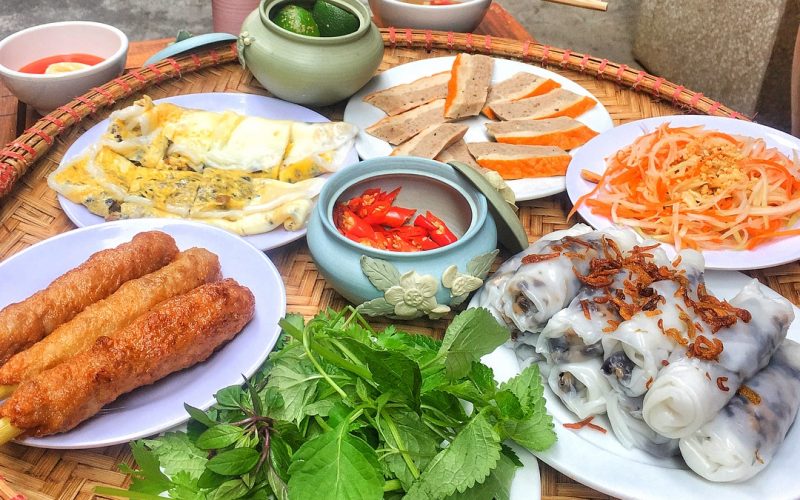
Aside from bun cha, the other big specialty of Hanoi is cha ca, which, like so many of Vietnam’s greatest dishes, requires a bit of self-assembly: chunks of fish dressed in a thick coating of turmeric and ginger arrive at the table in a small frying pan filled with oil. You then add entire batches of fresh dill and green onion into the pan, just about faint from the resulting aroma, and pile the fried fish and greens on to a mound of rice noodles.
Mix, sprinkle some peanuts on top, and dip each piece of fish into mam tom — a ferociously pungent dipping sauce made of fermented shrimp paste, fresh garlic and lemon juice — as you eat. It’s quite an experience.
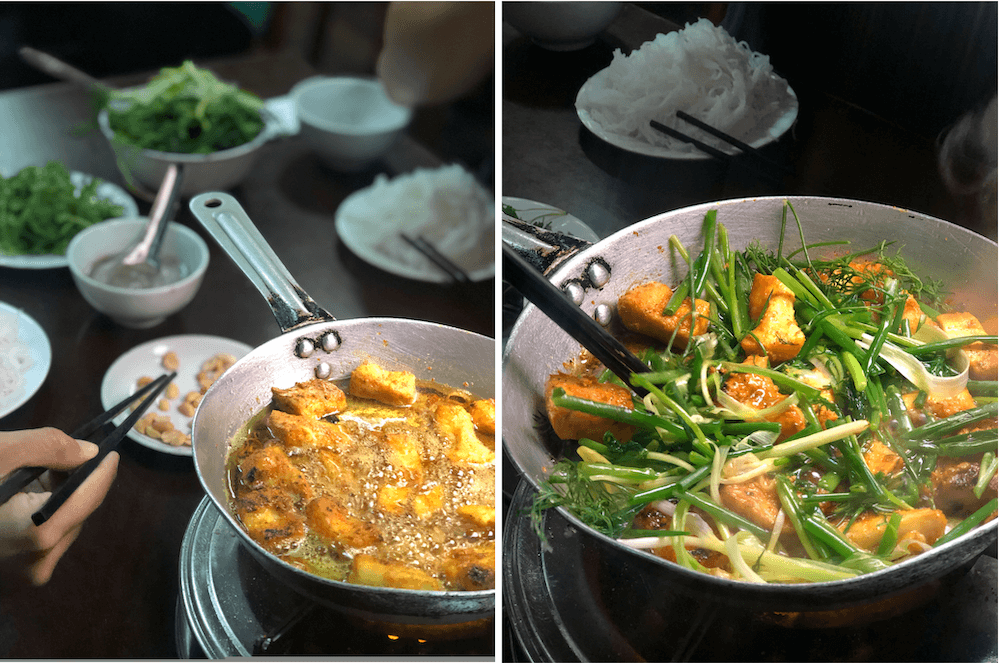
Where to get it: Cha Ca La Vong is the uncontested OG here. This is the spot that invented the dish, and it’s still one of Hanoi’s longest-running family-owned restaurants. Apparently it set up shop during French colonial rule, which is how dill, which is not indigenous to Vietnam, ended up featuring so heavily in the dish.
If seeing all that oil scares you off, though, then Cha Ca Thang Long does a great version that’s less oiled-up.
BANH MI! We didn’t forget about you, old friend. You’ll see banh mi stalls and shops all over Hanoi, but if you’re a bit OCD about hitting up vouched-for spots, then here are a few: Banh mi Minh Nhat is really popular, thanks in large part to the fact that its owner, Hoang Minh Nhat, won Vietnam’s MasterChef competition in 2014. There are often long queues coming out of the shop, but you can get a hype-free, no-frills, solid-tasting sandwich at Banh My Pho Hue.
If you want to go fancy, then Banh mi Nguyen Sinh is one of the longest-standing banh mi restaurants in Hanoi. It’s known for its homemade goose meat pate, and for charging about double what everyone else does (between 40,000-80,000 VND, or US$1.70-3.40). For those who care about getting in at least one check-in to a trendy spot, try Moto-san, a hip ramen shop that also serves a few Vietnamese dishes, including banh mi.
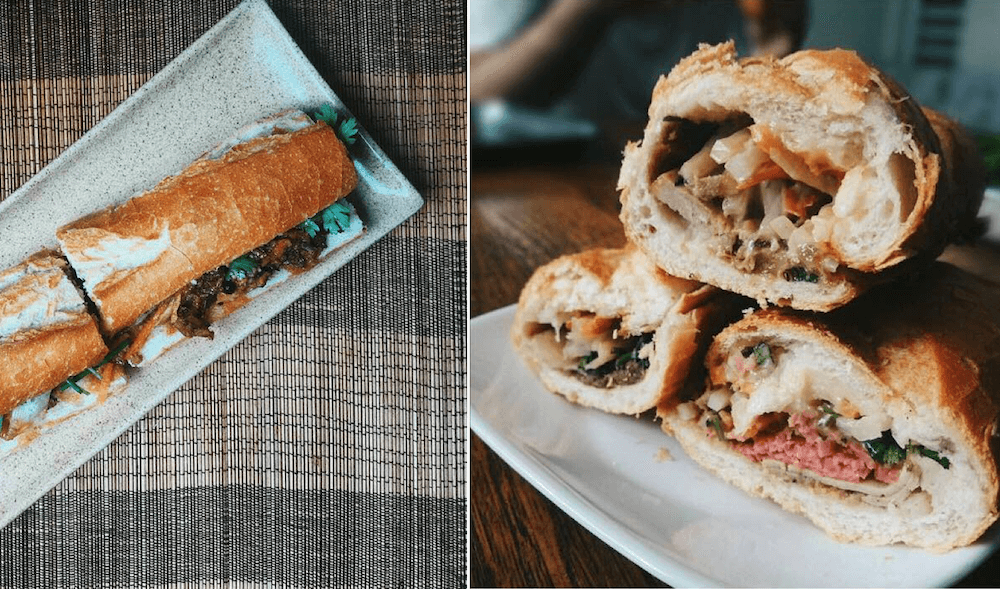
If you love noodle soups, then we cannot stress this enough: Make time, and room in your stomachs, for some bun ca. It’s a masterpiece in flavor-building: The broth is made with homemade fish stock simmered with tomato, pineapple slices and onion, then topped with fried fish chunks, green onion and a bit of fresh dill.
Restaurants usually use round, medium-thick rice noodles for this one, and will supply chopped fresh chilis, lime wedges and pickled garlic slices on the side. Bun ca Van is a widely beloved spot, or alternatively, try Bun Ca Sam Cay Si.
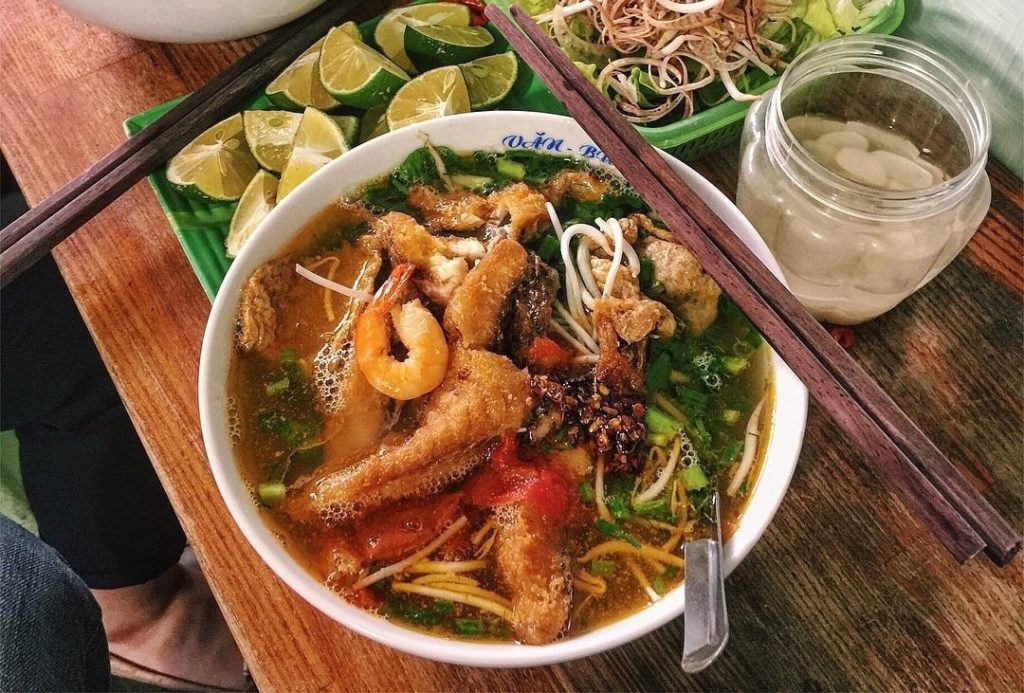
This last one might seem a bit out of place in this list, but it’d be remiss of us not to mention Uu Dam Chay, an upscale vegetarian restaurant that makes great use of Vietnam’s fantastic flora and fungi to produce some seriously creative, intensely good meat-free dishes. Alternatively, for vegetarian food that’s just as fresh but less frou-frou, try Minh Chay Vegan Restaurant, which has vegan pho and bun ca on the menu.
CAFES + BARS
The coffee here is excellent. Full stop. The bars aren’t bad, either.
You’ve likely heard of the Hanoi specialty “egg coffee” — egg yolks whipped with condensed milk, then poured atop robusta coffee. Apparently a barista would need to beat the yolks and condensed milk together for at least 10 minutes to achieve the silky, airy, soft and poofy texture that a good cup of egg coffee should deliver.
There’s also coconut coffee, which replaces the egg yolks with coconut milk, resulting in a foam that’s less dense but gains the naturally sweet, nutty flavor of the fruit.
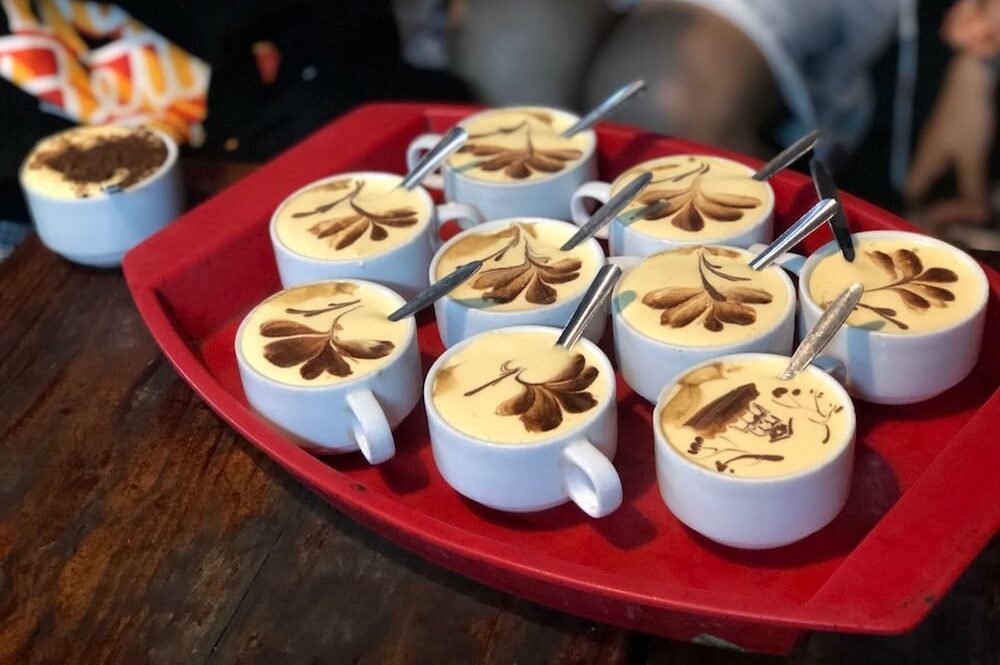
Cafe Dinh and Cafe Duy Trí are much-loved traditional coffee shops that specialize in the former, while Cong Caphe — which is decked out in vintage Communist memorabilia, including staff dressed in old-timey military clothing — is a popular spot for the latter.
The greatest egg coffee we’ve ever had, however, was the one lovingly made at The Hanoi Social Club. Trust us — if it were up to us, we’d champion a mom-and-pop shop instead, but dammit if Hanoi Social Club’s egg coffee didn’t just sweep us off our weak-willed feet. The cafe also has pretty good food, as well as music and event nights.
If you’d like to sniff out similarly hip cafes, then Tranquil Books & Coffee, located on a great little street called Nguyen Quang Bich in the Hoan Kiem district, and Circle Coffee also make quality coffee and consistently draw in a hip crowd.
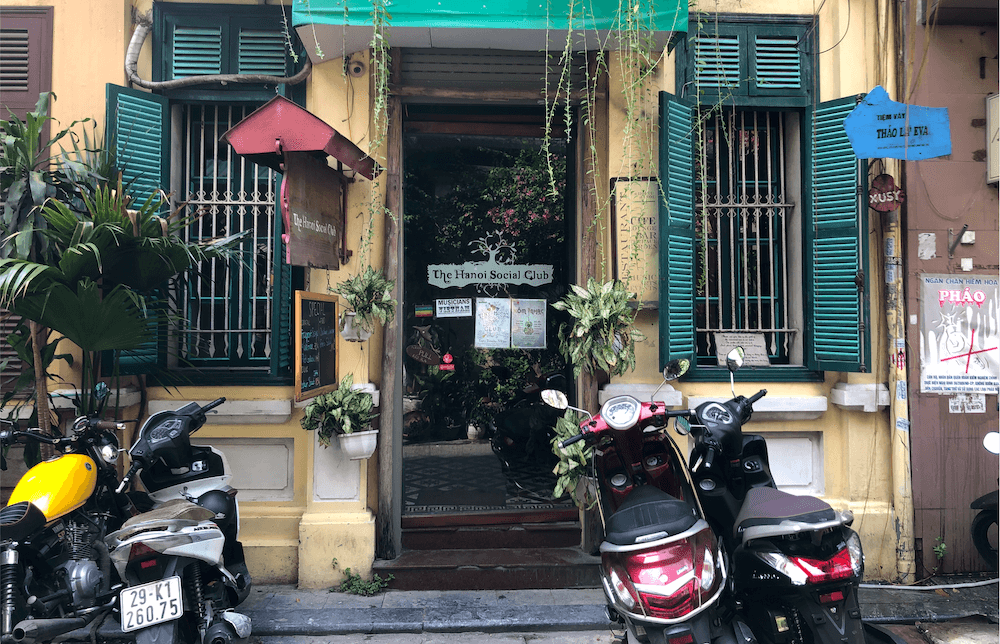
As for nightlife, you’re more likely to see laidback al fresco bars and tap houses than wild club parties spilling out into the streets of Hanoi. There are a handful of swanky rooftop bars, of course (Top of Hanoi, Diamond Sky Bar, and The Rooftop Hanoi, to name but a few), and a pretty solid alternative and underground nightlife scene via Sala Club, Savage, Birdcage, TET Club and the like.
For those who prefer a see-and-be-seen kind of craft cocktail spot, then Nê Cocktail Bar is probably the most well-known place for that — but it gets very, very packed, especially on weekend nights. Alternatively, try Polite & Co, or Mad Botanist for similarly stylish, upscale(ish) watering holes.
If you find yourself Googling search words “hipster + bar + Hanoi,” however, then the OG one in town is Tadioto, which supposedly brings in a steady crowd of local artists and musicians.
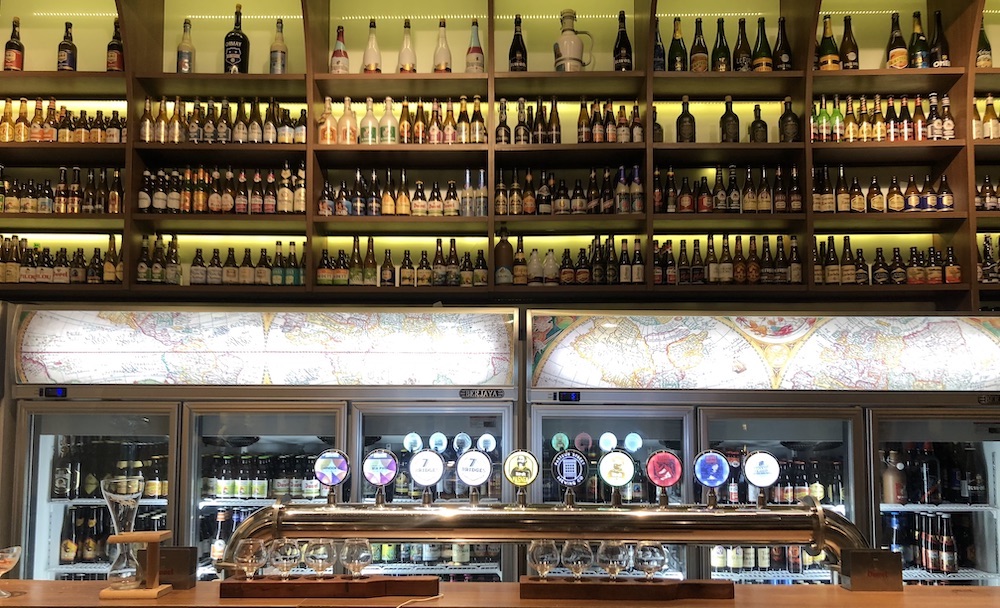
For beer, Standing Bar has 19 craft beers and ciders on tap at any given time, and The Atlas Beer Collector — located on the same sweet little street that Tranquil Books is on — has a solid selection of local craft brews on tap (we tried Furbrew’s Bia Pho, a pho-flavored ale, here) as well as a huuuuge collection of imported bottles from well-known craft breweries across the globe. Ho Chi Minh City’s Pasteur Street Brewing also has a taproom in Hanoi, with a good patio for people-watching.
SHOPPING + STYLE
Hanoi has great shopping options for pretty much whatever style and budget you’re working with — but we’ve long since passed our word limit on this guide, so here’s a condensed cheat sheet of shops that we found to have a little sumthin’ sumthin’ special.
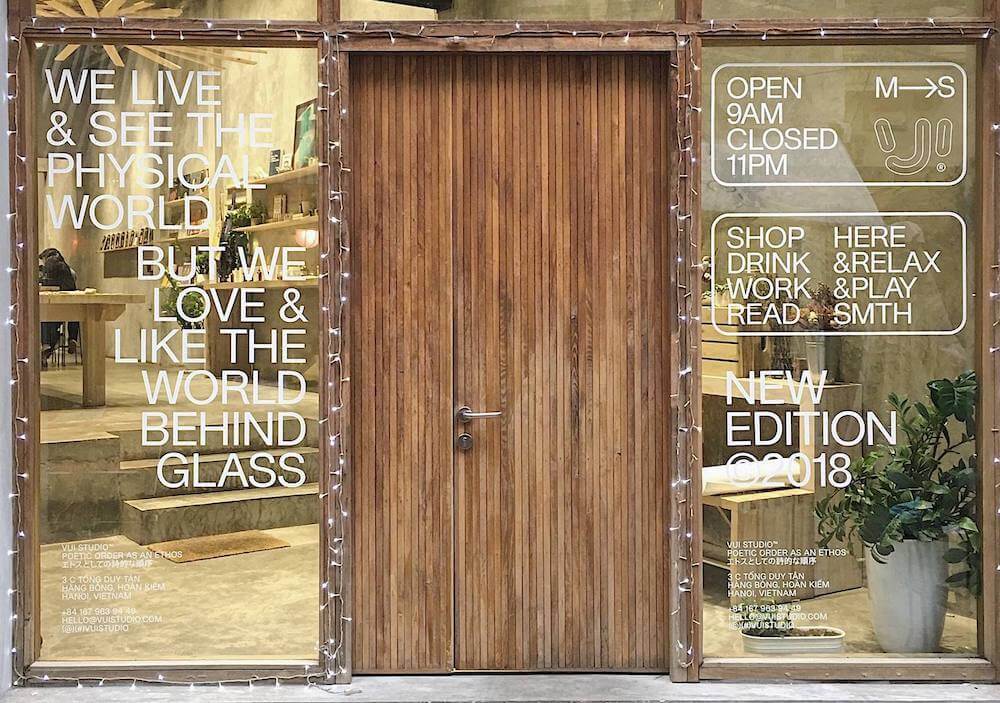
Vui Studio is a beautifully designed two-story cafe and multi-brand shop carrying local designer fashion accessories and homewares, with a small corner of vintage vinyls. The drinks are great, and the space is ideal for working on a laptop or reading, too.
Collective Memory bills itself as a cross between a “mini salon-style gallery and a museum-style concept store,” where you can find an assortment of art and artisanal products made in Vietnam. You can find everything from handmade ceramics and art prints and tchotchkes to artisanal chili sauce, soap, coffee and tea.
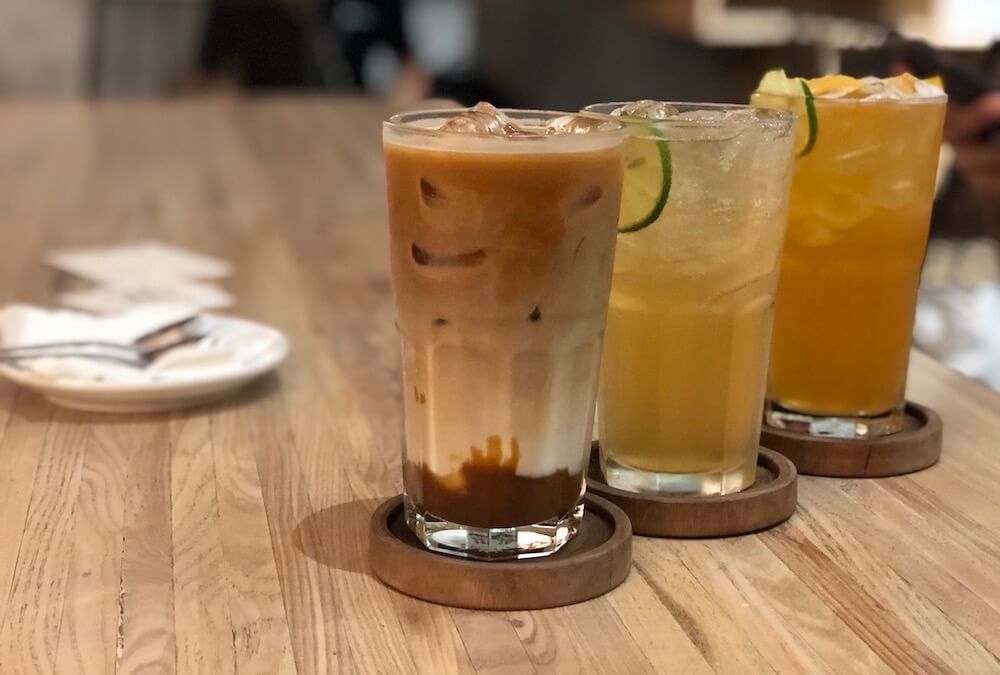
Hanoia carries really beautiful, really high-end (read: $$$$) homewares made by Vietnamese craftsmen, while Authentic Bat Trang does traditional ceramic designs at a more reasonable price point. Try Cerender Ceramics for more whimsical, hand-painted designs.
Vintage threads! Hanoi’s got ’em. Cua Hang Bach Hoa So 26 is a popular shop that’s stocked with both men’s and women’s vintage clothing and accessories, while Chan Con Cong and Maniac Vintage Store have excellent selections for women.
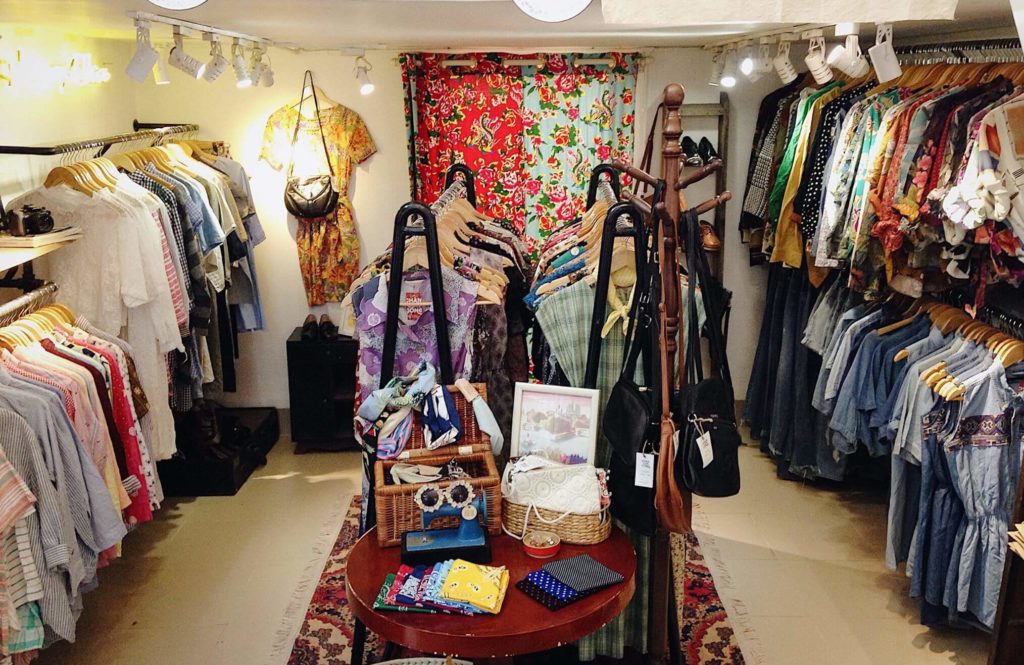
If it’s local designer goods you’re after, then the minimalist clothes and leather goods at An Hanoi are great, as are the silk pieces at Xeoxo, which is just a couple of doors down from Hanoi Social Club. We copped a couple of pairs of well-tailored wide-leg silk pants for VND 650,000 (US$28) a pair. For those who prefer bold colors, patterns and cuts, then Chula, which does men’s and womenswear inspired by traditional Vietnamese clothing, could be worth checking out too.
Speaking of silk, northern Vietnam’s well-known for being a major center of silk production in the country — in the region, even — so if you’re interested in the country’s history and craft of silk production, then the Van Phuc “Silk Village,” which is right outside of the Hanoi city limits, is an ideal destination for that.
WHERE TO STAY
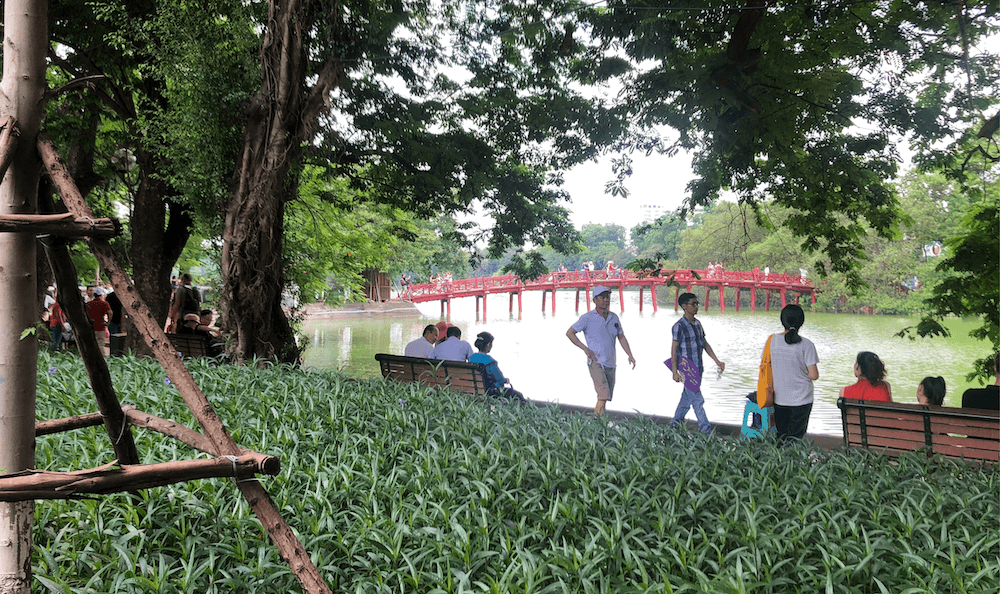
Travelers who like to be in the center of the action usually stay in and around The Old Quarter, Hanoi’s historic center. It’s easy to get around and explore the city on foot from here, especially during the weekends, when the streets surrounding Hoan Kiem Lake are closed off to traffic to give pedestrians a “Walking Street” to wander around as leisurely as they’d like.
Nearby Ba Dinh, where many of the city’s cultural attractions are clustered, or Tay Ho (Hanoi West Lake) are usually where visitors who want to be close by, but not directly in, the busiest part of town would choose to stay.
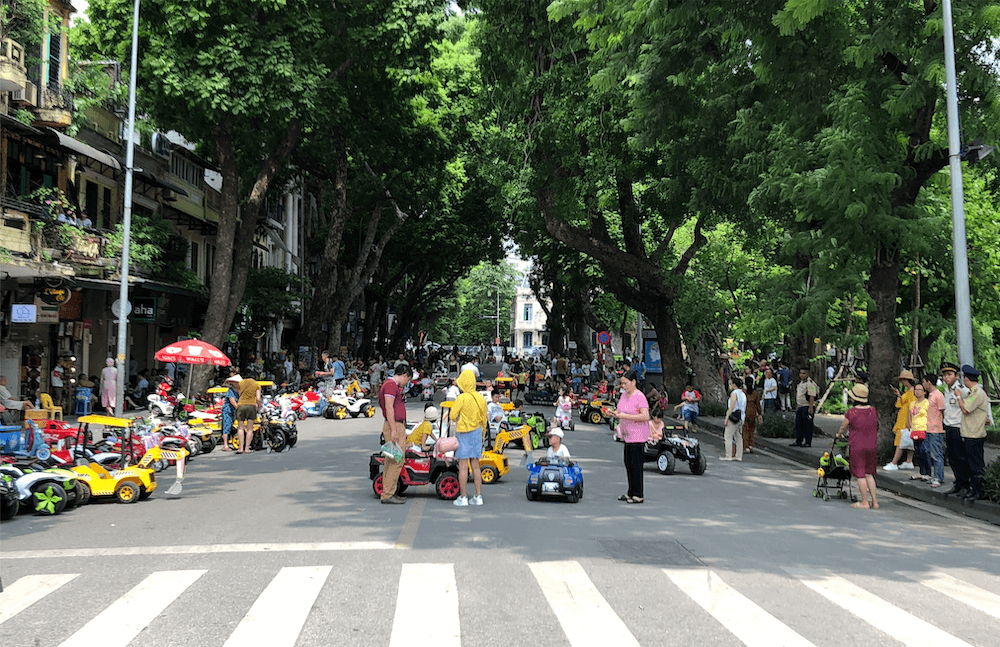
Airbnb options in Hanoi are solid, and there are some really nice, decked-out apartments at pretty affordable rates to be found on the platform. For those looking for more traditional hospitality options, there’s also a ton of boutique hotels located all over the Old Quarter (ranging from US$60-$100 per night for mid-premium to premium-ish options). That goes up to US$200+ a night for luxury boutique accommodations, and at international hotel chains.
During our recent visit, we stayed at the new Wyndham Garden Hanoi. It’s on the other end of the city and is a five minute drive away from the aforementioned Van Phuc “Silk Village,” which is not at all in the center of the action — and we were glad for it. We’ll have a full rundown of the experience, and what it was like to stay there, coming up on Coco Travel soon.
Until next time!
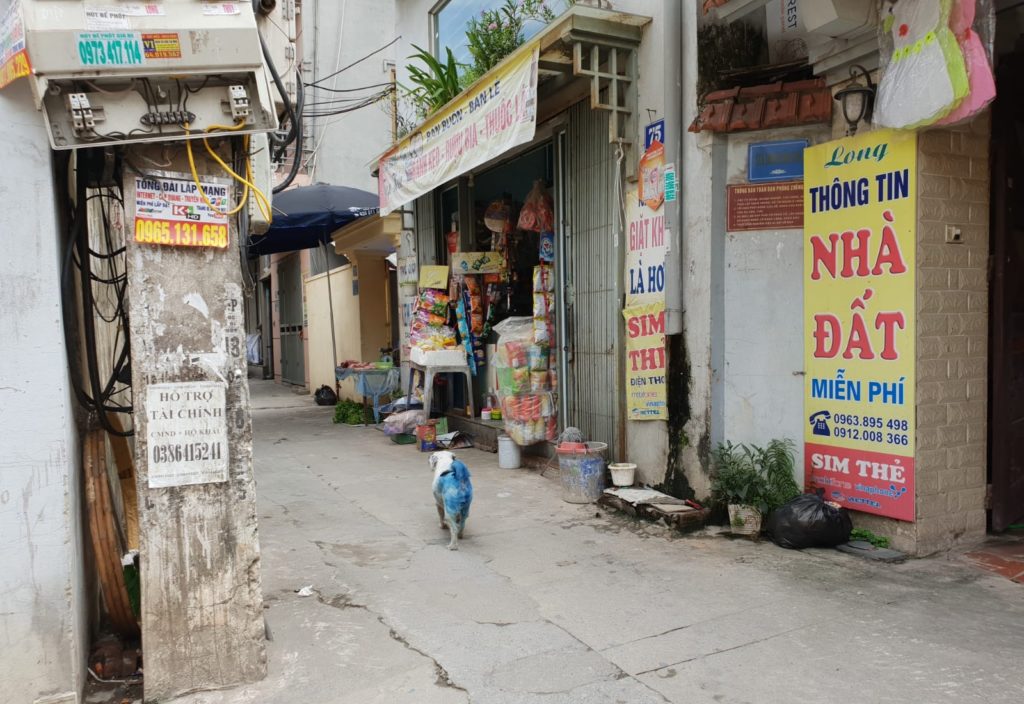
Related:
Guide to Penang: The best street food, hidden bars, museums, and cafes
Guide to Poblacion: Restaurants, bars, cafes, and clubs in Manila’s hippest hood
Indonesian food in NYC: Where to get good goreng, real sambal & great rendang
Guide to Sriracha, AKA Thailand’s ‘Little Osaka’
